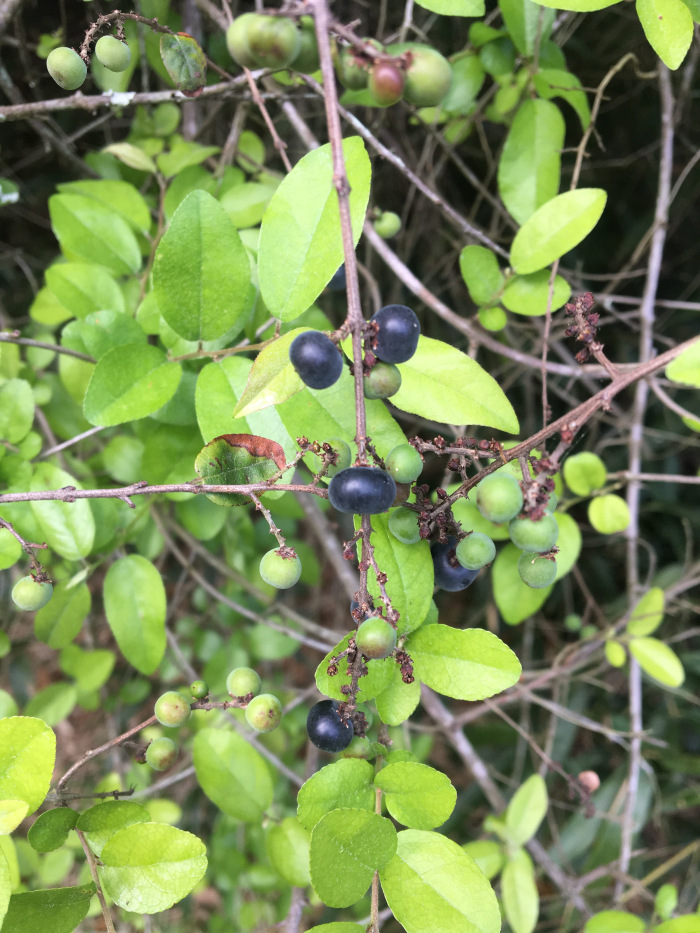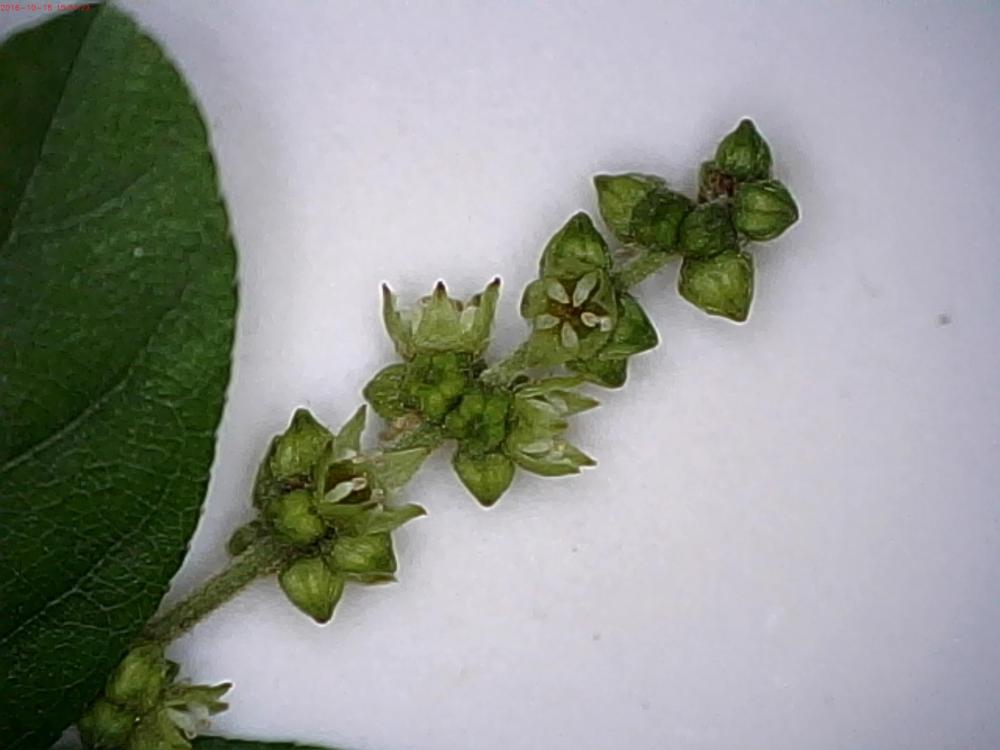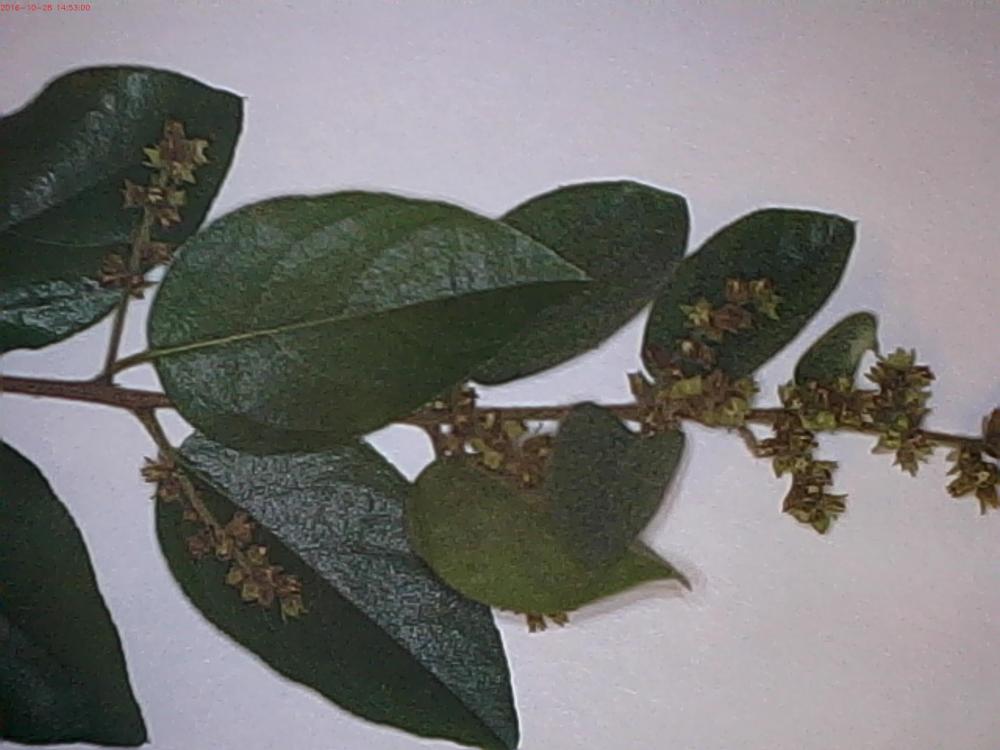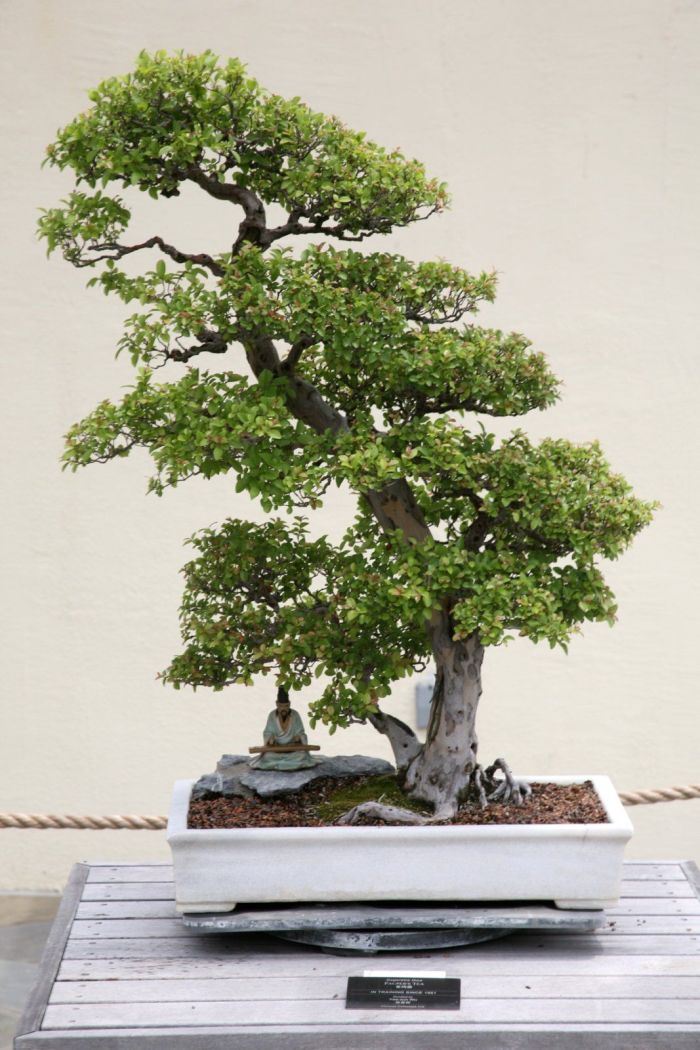Paupers Tea or Sagaretia thea
Sagaretia thea Paupers Tea – Chinese Sweet Plum (Rhamnaceae)
On Oct. 17, 2016, I first saw this peculiar small shrub at the edge of a forested area on Avery Island. From a short distance I thought it was Privet, Ligustrum sinense, which is widely naturalized throughout all of Louisiana but not common in Jungle Gardens. This new shrub appeared to have the typical small, opposite leaves that characterize Privet, but upon closer inspection I realized that it was something completely different. The leaves were more oval, and sub-opposite instead of opposite. Furthermore, leaf size varied considerably, from very small to somewhat large. Privet leaves are consistently small. Despite it being October, I was able to find a few stems with unique small flowers that confirmed this shrub was a species I had never encountered before.
After collecting fresh material, I returned to the ARCHIVES. Examining the few flowers I had found, I was able to confirm the family as Rhamnaceae, the Buckthorn Family. However, it was clearly a member that had never been reported for Louisiana. I sent photos and, subsequently, specimens to Anthony Reznicek at Ann Arbor, Michigan. Anthony is the leading authority of the family in the United States. He identified the plant as Sagaretia thea, Paupers Tea, a native of China. I checked the USDA data base and found that there was only a single previous record of this species for the United States, a collection made in 1989 in Brazoria County TX. The species was reported as naturalized after cultivation, having spread from where it was planted by the Texas Highway Department.
In the weeks and months that followed, I found Sagaretia growing extensively throughout the forested areas of Avery Island. In March of the following year, it was observed in flower and fruit in great abundance everywhere on the island. The small blue-black berries are numerous and have a relatively sweet flavor, like that of a blueberry. There are three large seeds in each tiny fruit.
Sageretia thea has a most peculiar growth habit. This somewhat spiny, evergreen shrub climbs into adjacent trees. It may reach heights of 30 feet into their canopies, forming a large “bushy” shrub. I have observed migrating birds feeding extensively on Sagaretia berries high up in the canopy of other trees.
Interestingly, its extensive spread across Avery Island has occurred all within the last 50 years. The 1966 publication, “A Botanical Study of the Five Islands of Louisiana” by William Reese and John Thieret, failed to record its presence. There is a reasonable expectation that Jungle Gardens, because of its horticultural nature, was excluded from the field work done by Reese and Thieret. It is also logical to assume that Sagaretia, being of Asian origin, was already growing in Jungle Gardens at that time, but that its colonization of the forest outside the gardens on Avery Island occurred later.
Literature indicates that, in China, Sagaretia leaves are gathered from the wild for local use as a tea. The leaves have also have been shown to have antioxidant activity and contain various medicinally active compounds that are of potential use in the treatment of certain cancers.
Despite its ungainly appearance, this species appears to be used extensively as a bonsai subject. Photos of very old bonsaied Sageretia specimens are incredibly beautiful.



